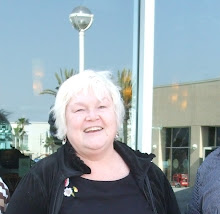Skype is an emerged technology that is shaping the future, if not in itself, at least in the expectations of the generations to come. It is an on-line telephony system in which you can see the person with whom you are chatting. It can also be used as an instant message system and a voice only service. Up to 24 people can all be in a conference call, although they can only talk. Furthermore, documents can be shared among participants.
I have used it for at least a couple of years for personal use, but I am interested in how it might be used in schools. Last year, Debra Hanks and I made history in her school district when we set up a Skype video chat between her students and me. They asked me questions about coastal South Carolina where I live. While I had difficulty hearing the students, it was a great experience for this ol’ teacher-without-students. I hope to get the pleasure of Skyping with her third-graders as well as another class of third-graders at the same school. There seemed to have been a bit of rivalry over who got to talk to the lady about the alligators.
I have been working on a volunteer program at a local high school to set up Skype between a Spanish class and some native Spanish speakers. Several of my Spanish speaking former students have shown interest in communicating with the students who are learning Spanish. Last night I introduced one of these now-college students to Skype. She was quite impressed that this old dog knew a trick that she didn’t. Another one found me in Skype the day before, and all she could do was worry about her hair. So, for some, seeing the person to whom you speak (or yourself as they see you might be a detriment.
Some of the problems—in addition to seeing yourself on your computer—have to do with poor quality video and sound that goes in and out. These are likely the problems with the individual computers. Another issue in collaboration is differences in time zones; users have to set up time when they can get together comfortably.
Another potential problem is that while you can call anyone even on a non-Skype phone, it is not free. To Skype for free, both parties have to download Skype.
Some of the advantages may come from actually seeing who you are talking to. I get to see a grandson on the West Coast every now and then. I also like that I can see who is online before I contact them.
If you would like to see more about Skype, go to http://about.skype.com/
Below is a graphic of Skype showing what it might look like once it is set up. I wrote a Skype tutorial for a previous class that will help you get going if you would like to try it:http://8847shelton.wikispaces.com/Skype+Tutorial

 n The Seabrook, a retirement center in coastal South Carolina. I live with senior citizens, all of who are older than I am, some of them by more than 30 years. Many of them don't want to learn about technology--they protest that they are too old to learn new things. For some that is true, but for others they just need the encouragement to try new technology. I am a leader in this community in technology in several ways. When we had a party for all of those people who were over 90 (and there were more than 70 people in that category in a group of 220 or so residents), I took a short video of the party. You can find it on my Facebook Page. There may only be a few who have seen it, but some said how amazed the were at what technology could do.
n The Seabrook, a retirement center in coastal South Carolina. I live with senior citizens, all of who are older than I am, some of them by more than 30 years. Many of them don't want to learn about technology--they protest that they are too old to learn new things. For some that is true, but for others they just need the encouragement to try new technology. I am a leader in this community in technology in several ways. When we had a party for all of those people who were over 90 (and there were more than 70 people in that category in a group of 220 or so residents), I took a short video of the party. You can find it on my Facebook Page. There may only be a few who have seen it, but some said how amazed the were at what technology could do.







